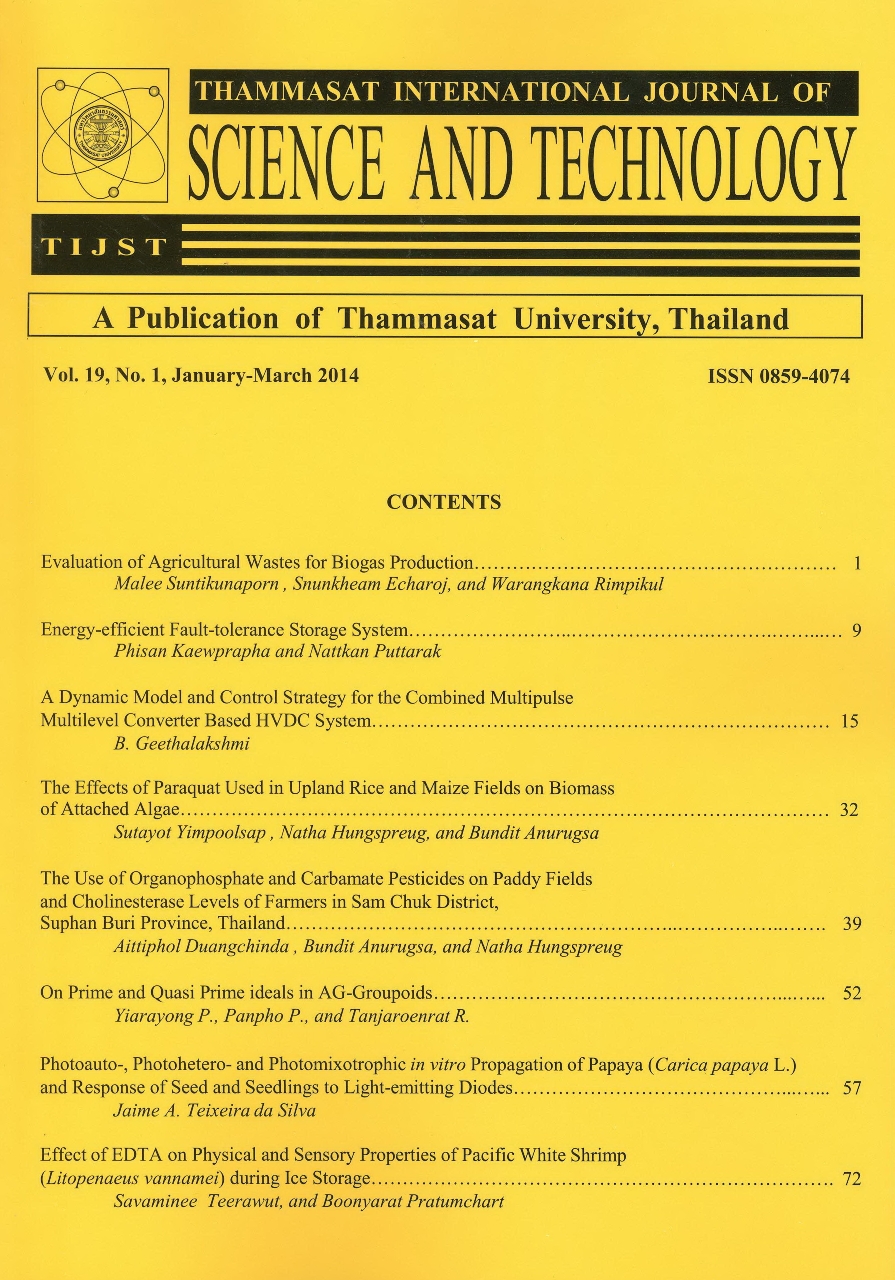Structural Insights of Megalobrama amblycephala Major Histocompatibility Complex Class I Alpha and II Alpha Antigen Proteins Revealed by in Silico Analysis
Main Article Content
Abstract
Major histocompatibility complex (MHC) encodes for major histocompatibility antigens which are important in the adaptive immunity of organisms. In this study, the two blunt snout bream (Megalobrama amblycephala) (Ma-)MHC Iα and MHC IIα antigen proteins were retrieved from the NCBI database and characterised using in silico approaches. Physicochemical characterisations of Ma-MHC Iα and Ma-MHC IIα, including theoretical isoelectric point (pI=5.33 and 4.62, respectively), extinction coefficient (EC=66,600/66,350 and 35,410/35,785 M-1.cm-1, assuming all pairs of cysteine residues form cysteines/reduced), instability index (II=37.0 and 35.6), aliphatic index (AI=76.3 and 79.5), grand average hydropathy (GRAVY=-0.475 and -0.197), were analysed. Ma-MHC Iα is a membrane protein, whereas Ma-MHC IIα is soluble. Disulphide linkages: Cys114-Cys178 and Cys214-Cys272 were found in Ma-MHC Iα, and Cys30-Cys179 in Ma-MHC IIα. Secondary structure prediction showed that random coils were predominant and followed by alpha helices, extended strands and beta turn. Secondary structures were assigned using 3-D model-based secondary structure approach. The 3-D structures were modelled and validated. The models of proteins were similar to theirs counterparts in human (PDB ID: 2rfxA for Ma-MHC Iα) and rat (1fngA for Ma-MHC IIα). Further, the ligand-binding sites, enzyme commission (EC) and gene ontology (GO), were predicted based on structure-based functional annotation. This study conducted the analyses of characterisations, structures and functional annotation of Ma-MHC Iα and Ma-MHC IIα proteins applying in silico methods for the first time. The findings provide important information for further studies on the extraction, purification, separation and specific functions, e.g. in resistance to infections, of these proteins in blunt snout bream.
Article Details
How to Cite
Tuan Tran, N., Wang, G.-T., & Wang, W.-M. (2016). Structural Insights of Megalobrama amblycephala Major Histocompatibility Complex Class I Alpha and II Alpha Antigen Proteins Revealed by in Silico Analysis. Science & Technology Asia, 21(3), 15–25. retrieved from https://ph02.tci-thaijo.org/index.php/SciTechAsia/article/view/67190
Section
Biological sciences


